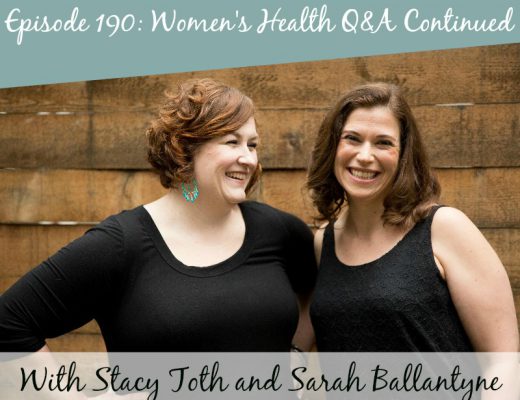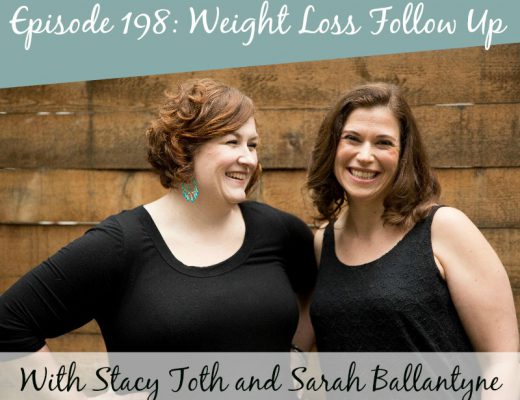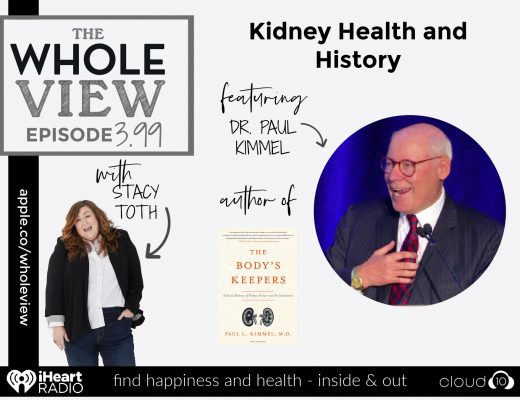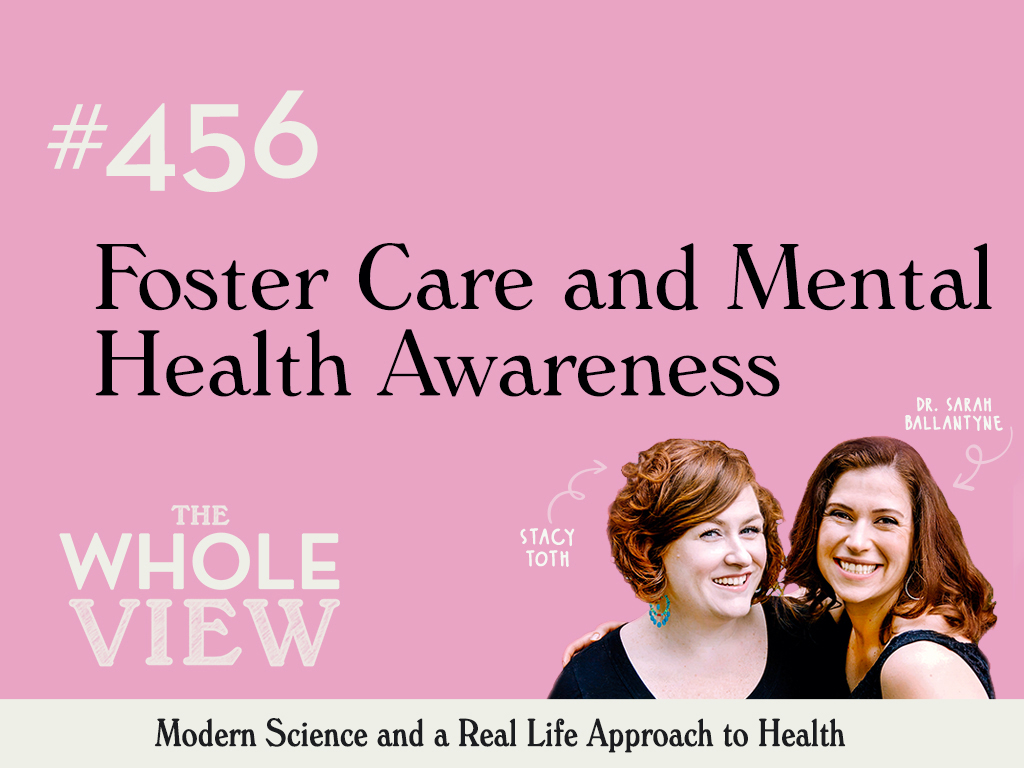 Welcome to episode 456 of The Whole View! This week, Sarah and Stacy tackle the topic of foster care and mental health awareness and dive deep into myths and misconceptions of families in the system. Stacy discusses her experience as a foster family, sheds like on what it’s like to work with the system, and what you can do to help these kids and their families.
Welcome to episode 456 of The Whole View! This week, Sarah and Stacy tackle the topic of foster care and mental health awareness and dive deep into myths and misconceptions of families in the system. Stacy discusses her experience as a foster family, sheds like on what it’s like to work with the system, and what you can do to help these kids and their families.
If you enjoy the show, please review it on iTunes!
The Whole View, Episode 456: Foster Care and Mental Health Awareness
Welcome back to episode 456! (0:28)
It’s foster care awareness month, and this topic is something very important to Stacy.
She hopes that in talking about foster care, she can dispel some of the system’s myths and miseducation. And let listeners know how they might be able to get involved even without becoming an official foster parent.
Here’s a list of some famous people who were once in foster care:
- Eddie Murphy
- Colin Kaepernick
- Steve Jobs
- John Lennon
- Marilyn Monroe
- James Dean
- Willie Nelson
- Ice T
- Louis Armstrong
- Cher
- Alonzo Mourning
Source: Famous Foster Children Who Have Been Through Foster Care | EHSD
Stacy wants listeners to understand that neither foster nor biological parents with children in foster care don’t need to be demonized or stereotyped negatively.
The goal of foster care is always reunification first, meaning the idea of having the child return to their biological family.
Stacy adds that this doesn’t always mean parent, but sometimes caregiver or guardian. Sometimes this is by the parent’s choice for what is better for the child.
Types of Foster Families
There are many different types of foster families. (5:15)
Many children go through the state directly. Stacy had a friend who just adopted her foster daughter this way.
Others go through agencies that provide administrative and emotional support to foster families. States have many different foster care laws, so agencies will look a little different depending on where you’re located.
There is also Therapeutic Foster Care through an agency. This is what Stacy and her family do.
They are uniquely approved to foster and adopt children and teenagers who are working to overcome trauma, abuse, or struggle with emotional, behavioral, and/or medical challenges.
It involves extensive training to be licensed (not just as foster parents but also as a therapeutic foster resource family) and receives comprehensive, ongoing support.
As a foster parent, you undergo investigation from extensive background checks to validating your financial independence. There is an extensive interview process families go through that involves friends and neighbors as well. And it’s much more difficult than it’s portrayed in movies to just “get foster kids for the money.”
The Goal of Reunification in Foster Care
The length of time kids spend in foster care varies, but the goal is no longer than 18 months, and there are always “goals” written by the state that both sides need to abide by.
In Stacy’s experience, the state goes above and beyond to reunify the kids with their families. This includes support services to the biological parents.
Fostering to adopt really varies from state to state. Where Stacy lives, it’s only possible to be approved for both through an agency.
Stacy and her family aren’t wholly looking to adopt at this time. However, they wanted that flexibility if it makes sense for kiddo to stay, which is why they chose an agency that did both.
The kiddo currently staying with Stacy is estimated to be with them for about a year. This is to allow proper time to evaluate the child’s situation and ensure that they receive the held and care they need.
Need for Foster Care
The more kids in the system, the longer the process is. Stacy mentions that in her state, the need for foster care is at an all-time high. (16:01)
An estimated 437,283 children were in foster care on September 30, 2018. For perspective, that’s one chilling entering care every 2 minutes.
On September 30, 2018, nearly one-third of these children (32%) were in relative homes, and nearly half (46%) were in non-relative foster family homes.
Over half (56%) had a case goal of reunification with their parents or primary caretakers.
About half (49%) of the children who left foster care in 2018 were discharged to be reunited with their parents or primary caretakers, and close to half (43%) who left foster care in 2018 were in care for less than 1 year.
Stacy adds that the estimated 437,283 children in foster care on September 30, 2018, were in the following types of placements:
- 46% in non-relative foster family homes
- 32% in relative foster family homes
- 6% in institutions (such as juvenile detention centers as holding spots)
- 5% on trial home visits (State retains supervision of the child)
- 4% in group homes
- 4% in pre-adoptive homes
- 2% in supervised independent living
- 1% had run away (that’s over 4k kids!)
The Importance of Trust and Support
Even before covid, Stacy was shocked to learn that foster kids in her state are often placed in Juvenile detention centers, not for having committed no crime but because they have no place to go.
This often puts those kids on a path they would otherwise have been able to avoid in a safe, stable environment.
Stacy explains that of these kids that run away, a lot of it comes down to trust. They’ve seen and experienced so much that they don’t trust others to take care of them. So they’d prefer to take their chances on the streets.
However, Stacy shares success stories where the families can establish that trust and bring the kids back in.
Of those 437,283 children:
- 56% had a goal of reunification with parent(s) or principal caretaker(s).
- 27% had a goal of adoption.
- 5% had not yet had a case plan goal established.
- 4% had a goal of emancipation.
- 4% had a goal of guardianship.
- 3% had a goal of living with other relatives.
- 2% had a goal of long-term foster care.
And of those same 437,283 children:
- 49% were reunited with parent(s) or primary caretaker(s).**
- 25% were adopted.
- 11% went to live with a guardian.
- 7% were emancipated.
- 7% went to live with another relative.
- 1% had other outcomes.
Re-entry Into The System
Stacy notes that kids who are returned but then later re-enter the system are a different statistic. (26:45)
Re-entry in child welfare is traditionally viewed as a child exiting to permanency and then re-entering the child welfare system.
Using this approach is effective for understanding child welfare practice from a single-system lens. However, it gives an incomplete picture of how children may move between related child-serving systems.
The present study expands the definition of re-entry by examining re-entry for 2259 children who either return to the child welfare system or move into the juvenile justice system after reunification from foster care.
When measuring a broader concept of re-entry (into either system), the rate of re-entry went from 18% to 25% (a 33% increase!)
Sarah asks about statistics on why there is so much re-entry. A lot of children end up needing care due to the epidemic of drug use. Relapse is a very real problem in recovering addicts and can easily result in children once more needing care.
The amount of support given to families while the kids are in the system is fantastic. However, once the kids go home, the families are once more on their own. Stacy believes better transitional programs would help.
Stacy also notes that a child entering foster care will likely live in more than four homes during the first year of care.
If things don’t go “as planned,” it’s common for children who grow up in foster care to move more than 15 times. Each move can mean falling further behind in school and having to make new friends.
Parental Rights And Outcomes
Stacy has 4 foster kids in her home in the last 18 months. 3 had a goal of reunification: 2 are still on that path while 1’s parent chose to terminate parental rights. (30:10)
If parents are unable or unwilling to meet the goals established when the child enters the system, either the state or the parents can choose to terminate parental rights. This can be voluntary or involuntary.
For teenaged children also have significant input in the decision. The state tries to support parents as much as possible to reunify with addiction treatment, therapeutic services for abuse, helping them get financial support, etc.
Stacy reminds listeners that terminating parental rights isn’t something to be demonized. Sometimes, having the biological parent act as the primary caregiver isn’t what’s best.
In this case, terminating rights gives the child a chance at getting adequate care and support to flourish. And it doesn’t mean the parent relinquishes any and all relationship with their child.
The 4th child that stayed with Stacy had a goal of adoption. However, it was not their outcome.
They had been in the system for 4 years (in multiple institutions, group homes, and over a dozen foster homes), and sometimes trauma from consistent rejection and abandonment can be too much.
Every case is different. Outcomes can be influenced by many different, complex reasons, including the child no longer wanting to be with that family anymore.
Respite Families as a Way to Help
Everyone needs to be happy with the placement, including the parents and the child. This is why many agencies have “short-term placements” while finding the best fit for the child’s situation.
Respite is also a program for families, biological or like Stacy’s, who just need a week or so for a break to breathe. Stacy has both used respite and been a Respite family.
Respite isn’t like a “time out” or a failure. Stacy has fostered the same kids repeatedly while acting as a respite for another family because you get to know these kids, and having them come stay with you for another week is exciting.
Maslow’s Hierarchy of Needs
Maslow’s Hierarchy of Needs is based around this idea that there’s a broad hierarchy of basic human needs that are universal. (36:50)
Sarah adds that this concept has received some criticism over the years of its existence because many cultural and biological things can impact needs.
However, it’s commonly excepted as a general umbrella of human needs.
Maslow’s theory states you can’t move up to the next stage without meeting all the levels below it first. And you have to address all the base needs before reaching your best self.
Foster kids, statically, struggle with school. Stacy explains that it’s hard to occupy yourself with math when safety needs aren’t being met.
Attachment, food, safety, and shelter are things that come up again and again as something these kids have had ripped away from them. So even though you know you’re providing it to them, it’s difficult for them to let their guard down.
Foster Care Support For Families
Each child entering into the system have a team of people to help them and their families throughout the process. (44:50)
CASA is a volunteer position and is perfect for people who want to be involved and help but cannot serve as a foster family. They advocate for what the child wants.
GAL is a legal advisor to act as a judge for what that child wants.
The child and the biological family each have their own court-appointed lawyers to help see them through the legal side of the process.
A DSS worker is a legal guardian for kiddo while they’re in care. They sign school forms, medically advocate for the child, and take on other roles usually held by a legal guardian.
They have medical service providers and treatment providers, such as wrap-around services, to prevent foster care, intensive in-home therapeutic services, and therapy for both the child, biological parent and foster family.
Stacy also has a ‘therapeutic foster care worker’ and a team of supervisors who support her as a foster resource parent and family because it’s a lot!
Over Medication of Youths
In 2010, the Tufts Clinical and Translational Science Institute estimated that the rate of psychotropic medication use for youths in foster care is anywhere from 13 to 52%. This is compared to about 4% for youth in the general population.
A 2014 Government Accountability Office (GAO) report found that at least 18% of children in foster care were taking at least one psychotropic medication.
Some of the medications have not even been approved as safe and effective for children by the FDA.
Children with one consistent caseworker have a 75% of permanent placement while those with 2 drops drastically to 17%. Those with 3 or more have a .1% chance of being placed!
She wished tons of things differently, but Stacy genuinely sees kids’ best interests at play.
Covid And Foster Care
Stacy notes that Covid has had a significant impact, and the system is so overwhelmed it cannot provide adequate safety for many. (59:15)
They are expecting a significant increase from the 2018 numbers in 2020 due to the pandemic.
Sarah shares these news articles she’s found on Covid on the foster care system:
- N.Y. Times
- The Nation
- The Impact of Covid-19 on Youth in Foster Care | Forbes
- www.acf.hhs.gov
- Coronavirus Throws Foster Care System into Crisis | The Marshall Project
Issues can stem from families not wanting to foster anymore because they’re afraid it might bring covid into the home.
Others can be from families now overwhelmed with the kids being home and unable to provide adequate care or put the kids in dangerous situations.
Systematic Child Welfare
Stacy is privileged to live in an area with the funding for all the roles and programs offered to these kids. (1:05:30)
In fact, White families are more likely to prevent foster treatment than Black or Brown parents.
A seminal 2017 study found that a shocking 53% of Black children in the U.S. will be investigated as potential victims of child abuse by age 18. That’s 16% higher than the rate for all children!
Despite studies showing no relationship between race and child maltreatment, Sarah points out that systemic racism could fuel it.
Once in the system, Black children also are more likely to stay in foster care, less likely to be reunified with their families, more likely to be placed in group care, age out in greater numbers, and become involved in the criminal justice system.
The pipeline that feeds youth in foster care into the adult criminal system has an especially harmful impact. As of 2015, Black youths were 5x as likely as white youths to be detained or committed to juvenile justice facilities.
In 2019, The Kansas City Star surveyed nearly 6,000 incarcerated people in 12 states, and 1 in 4 responded that they had been in foster care.
Black children are separated from their families and placed in foster care at a far higher rate than white children, often repeatedly. In 2019, Black children accounted for 23% of the children in foster care, although they make up only 14% of the country’s children age 18 or younger.
They are also more likely to be placed in a group home where they face additional trauma and abuse.
Notable Cases
In a devastating tragedy earlier this year, staff members restrained and killed a 16-year old Black boy, Cornelius Frederick, while being held in a for-profit foster care group home facility. (Source)
Another example is Ma’Kai Bryant, a Black foster teen fatally shot earlier this year.
Stacy is confident Ma’Kai’s situation would have ended differently had she had the treatment team Stacy’s kiddos were fortunate enough to have in their corner. They can call a social worker for concerns, process, or cope, rather than having to wait until a physical altercation to call the police.
Stacy breaks down the following are the races and ethnicities of the estimated 437,283 children in foster care on September 30, 2018:
- 44 percent were White
- 23 percent were Black or African-American
- 21 percent were Hispanic (of any race)
- 10 percent were other races or multiracial
- 1 percent were unknown or unable to be determined
The percentage of Black or African American children in care on September 30 decreased between 2008 and 2018, while the percentages of White children, Hispanic children, and children of other races or multiracial children increased.
Aging Out of the Foster Care System
There is a huge lack of support for children as they turn 18 and age out of the foster care system. (1:15:00)
Within four years of aging out, 70% will be on government assistance, and about half will not complete high school. Only 3% of youth in foster care graduate from college, and 25% are incarcerated within 2 years. (Source)
Children and adolescents with foster care experience are diagnosed with PTSD at twice the rate of U.S. war veterans.
Within four years of aging out, 50% have no earnings and those who do make an average annual income of $7,500.
After foster youth ages out, homelessness and unemployment become a huge issue linked to increased risk of drug addiction, unwanted pregnancy, and human trafficking.
Trafficking Risk
In the U.S., 60 percent of domestic child trafficking victims have a history in the child welfare system.
Traffickers target youth in foster care because of their increased vulnerability due to a lack of family and emotional relationships and support.
74% of child trafficking cases involved sex trafficking, and the majority of those involved pimp-controlled prostitution.
According to the National Center for Missing and Exploited Children, the average age of child sex trafficking victims is 15, according to the numbers of children reported missing. Source: Child Sex Trafficking – Children’s Rights
The overwhelming majority of missing children reported are endangered runaways. The statistics tell us that 91 percent of missing kids reported missing were children running away from home or foster care last year.
The second highest rates of missing children were abducted by a family member who did not have custody. Less than one percent were non-family (stranger) abductions.
For more info, see Child Sex Trafficking (missingkids.org)
This is why foster care families, support, and funding are so important for these kids. We need ongoing support after they age out or reunify with their families.
LGBTQ+
A 2019 study found 30.4% of youth in foster care identify as LGBTQ+ and 5% as transgender, compared to 11.2% and 1.17% of youth not in foster care.
The Williams Institute also found that around 40% of unhoused youth identify as LGBTQ+.
LGBTQ+ unhoused youths are roughly 7.4x more likely to suffer acts of sexual violence than heterosexual unhoused youths who have been in foster care.
Without safe foster care placements and without the vital support of caseworkers and other child welfare professionals, LGBTQ+ youths often flee abuse in foster care only to face homelessness and exploitation.
What Can We Do?
One of the best things you can do is volunteer and donate time, money, or goods. (1:24:45)
There’s a huge need for foster parents, but it’s not always feasible. Other ways you can help are through respite, becoming a CASA, or providing resources for agencies or families.
Talk openly and honestly about what foster care is and what it isn’t. There are so many misconceptions from T.V. and film, and people often assume the worst.
You can donate a “birthday box” through Together We Rise, a non-profit organization that will ensure a kid with the same birthday gets a pre-packaged birthday box to their social worker.
You can support kiddos aging out of foster care through the Dreammaker’s Project Shop, where kiddos’ creations are available for purchase. Stacy has personally bought the spices and artwork cards!
Dreammaker’s Project allows you to sponsor kids aging out who need basic needs to survive. This helps provide things like bus money to get to their job or for a computer to finish school.
You can also donate or sign-up for a children’s rights membership at Children’s Rights (convio.net)
Stacy’s specific Agency, UMFS, is always looking for support. Or you can find one in your local area by donating goods (like suitcases and car seats) they may need, your own time, or money.
This month, Stacy will be donating 20% of all her proceeds from Beautycounter to these organizations. Last month, she raised $2500 for Children’s Rights, which fights for systemic change.
Just $1 donated is equal to $100 into the system because of the broad impact it makes.
Final Thoughts
These kids don’t have access to that next-level diet and lifestyle that’s so often talked about on this show because they’re struggling with basic needs. (1:30:00)
There’s so much room to nurture these kids by showing that support and avocation to the foster care system.
How can you be worried about health from non-toxic living if your life is in danger and aren’t safe and stable?
The Whole View has always advocated for health, wellness, and safety for all, and while we talk about our personal wellness, there’s a lot more going on out in the world.
Being a foster parent is not easy, but it’s so rewarding. Stacy has learned so much from these kids, and they deserve to be just as well, healthy, and safe as everyone else.
Thank you so much for joining us this week! For more behind the scenes on this topic, be sure to join us on Patreon for exclusive content.
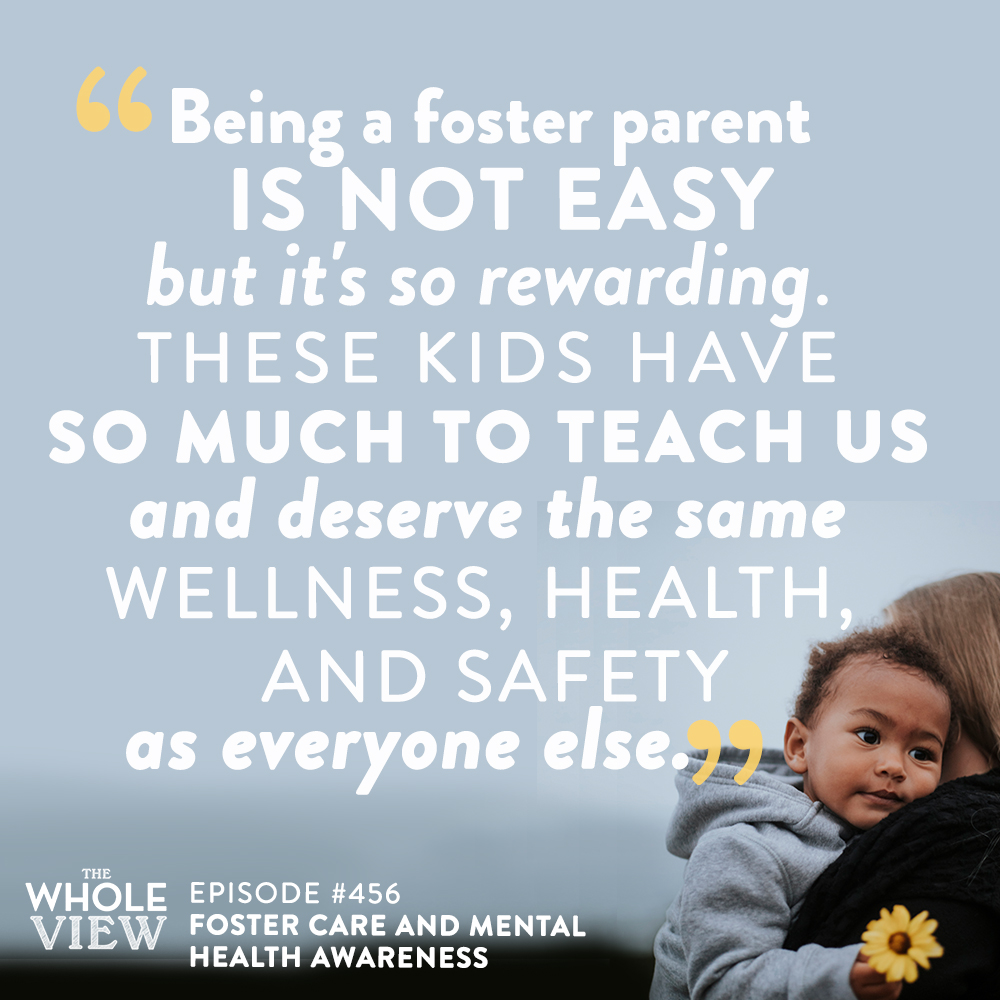
Want more info on our Real Life? Never miss a post with our Real Everything newsletter (and get our best selling book, Eat Like a Dinosaur, as a welcome gift). Join here
Wanna be Healthy Inside & Out? Get educational info and exclusive sales with our non-toxic living newsletter (and get free samples as a thank you for joining our safer skincare community). Join here

